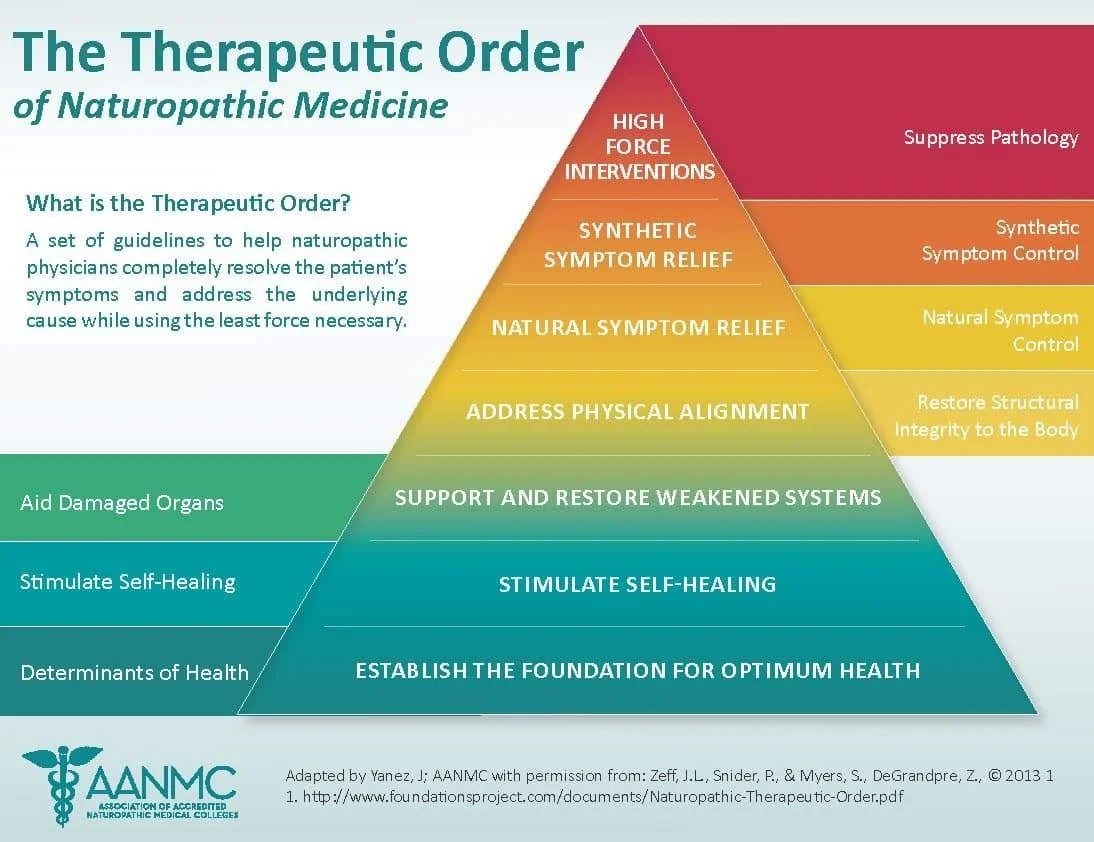Understanding Suppressive vs. Root-Cause Medicine
Imagine your body as a field.
The symptoms you experience, such as anxiety, fatigue, eczema, or behavioral challenges, are like weeds growing in that field. When the weeds start to take over, most people just want them gone. Fast. So we reach for whatever will make them disappear.
That’s where suppressive medicine often comes in.
It’s like spraying herbicide across the field. You might not see the weed anymore, and for a moment, that feels like relief. But the root is still there. And as long as the root remains intact, the weed grows back, often stronger than before. Over time, herbicides damage the very soil they’re meant to protect. Similarly, suppressive medications may quiet the symptoms but often come with side effects that weaken the body’s terrain. The longer we rely on them, the more fragile the system becomes.
Now let’s look at another approach, the one that actually strengthens the soil.
The Therapeutic Order: A Framework for Root-Cause Healing
In naturopathic medicine, we use a model called the Therapeutic Order, a visual representation of how we approach healing from the inside out using the least force necessary to support true resolution. It honors the body’s natural ability to heal when given the right conditions.
At the base of this pyramid is establishing the foundations for health: nutrition, hydration, sleep, movement, clean air and water, a non-toxic environment, regulated stress, and healthy menstrual rhythms in women. I also add unprocessed trauma to this list, because unresolved emotional and energetic experiences often live in the body and create patterns of dysfunction.
Without addressing this foundational layer, any intervention we add, even a natural one, has to work against a stressed, dysregulated system. It's like planting new seeds in depleted soil.
From there, the next layer is stimulating the self-healing mechanisms of the body. This is where homeopathy lives. It’s one of the most powerful tools I use because it speaks directly to the body’s vital force and helps reawaken its own capacity to heal. In most of my treatment plans, I begin by working within the first two levels: restoring the foundations and supporting the body's innate healing intelligence.
As we move up the pyramid, we add therapies in order of increasing intervention: gemmotherapy, herbs, and supplements. Even though supplements like B vitamins are considered "natural," most are synthesized in a lab and should still be used with clinical precision. Just because something is natural doesn’t mean it’s neutral. Overprescribing, even with good intentions, can lead to imbalances.
Pharmaceuticals and surgical interventions exist at the top of the pyramid, and they have their place. But in this model, they are reserved for when all else has failed or when immediate intervention is needed. They are not the first line. They are the last resort. Unfortunately, in our current medical system, this order is often reversed. Many of the patients who come to see me have already exhausted conventional approaches. By the time they arrive in my office, root-cause care is seen as a “Hail Mary” rather than a foundational starting point. But this is the opposite of how we should be supporting the body. True healing begins by working with the body, not against it.
Root-Cause Medicine Pulls the Weed Out
Root-cause medicine doesn’t ask, “How can we make this symptom disappear?”
It asks, “Why is this here in the first place?”
It slows down enough to understand the conditions that allowed the weed to grow. Instead of suppressing the symptoms, it helps the body gently release the root.
This process isn’t always fast. But it leads to real, lasting change. The soil of the body becomes stronger. The immune system regulates. The nervous system softens. And the health of future generations improves because what we heal in ourselves, we don’t pass down.
This is the foundation of how I work, whether I’m supporting someone with chronic illness, neurodevelopmental challenges like autism or PANS, or hormonal and digestive imbalances. I’m not here to patch symptoms. I’m here to help rebuild the soil.
Because when the body is resilient, symptoms don’t need to scream.
Because when the root is healed, the weed doesn’t return.
Because when we change the terrain, we change what we pass on.

